Early Chinese Philosophy: The Humanism of Confucius
The classical period of ancient Chinese philosophy runs from about the 6th century BCE till the 2nd century BCE and is marked by the proliferation and flowering of many varying philosophical schools, an era in Chinese history referred to (by Chinese historians, sinologists) as the “hundred schools of thought”[1]. Interestingly this corresponds almost precisely to the proliferation and evolution of philosophy in the West in the Hellenic world as well with Platonism, Stoicism and Epicureanism taking root in the Mediterranean from the 5th and 4th century BCE onwards. This is sometimes referred to as the so-called “Axial Age” which is a period in antiquity from around the 8th to 3rd centuries BCE where rapid and innovative forms of intellectual development appeared simultaneously across Persia, India, China, and Greece.[2]
One of the hallmarks of the Chinese philosophical tradition in antiquity is the absence of a detailed semantic philosophical inquiry, at least how we think of philosophical inquiry in the West. More specifically, what is missing is what we in the Western intellectual tradition refer to as epistemology, or that which can be said to be true or real. This Platonic idealism, within which our entire framework of physics is in fact firmly placed and established, gave rise to the metaphysics in the classic Aristotelian sense and is one of the hallmarks of intellectual development in the West from which science as we know it was born.
Lǎozǐ, along with Confucius, are arguably the two greatest and most influential sages of Chinese antiquity. While the focus of ancient Chinese philosophy was different than that in the West and in classic Hellenic thought, the two schools diverged in emphasis and focus, and yet at the same time evolved together, much like Aristotle’s teachings did from Plato (Lǎozǐ and Confucius respectively).[3] It is with the Dàodé Jīng and the other classic Daoist text from antiquity, the Zhuangzi, however that form the cornerstones of Daoist philosophical thought, with the Yìjīng being adopted somewhat later in the tradition as various commentaries were written on it with various mystical, esoteric and Daoist like interpretations.
Confucius and Lǎozǐ from a Western Han (202 BCE – 2 CE) fresco[4]
In ancient China, prior to Buddhist influence, we have two primary schools of thought that eventually dominate the intellectual and pseudo-theological landscape – the Confucianists on the one hand with its socio-political and ethical emphasis along with the Daoist tradition with its more esoteric leanings. While the latter school did not necessary arise and evolve in contrast to the former, the two together do represent at some level the spectrum of philosophical world views that are distinctly Chinese and that have dominated Chinese thought since at least the Han Period in the 2nd century BCE.
Confucian philosophy is historically associated with Confucius (551 – 479 BCE) himself, as reflected most prominently in a work attributed to him called the Analects as well as with one of his prominent followers and interpreters Mencius (c. 372 – 289 BCE) who lived a few hundred years or so after Confucius during the Warring States Period (475 – 221 BCE). While Confucian philosophy is focused on ethics, rites and ceremonies, and generally speaking “moral behavior”, the early Daoist philosophical tradition not only permeates the divination text the Yìjīng, with its emphasis on Yīn and Yáng as the primordial forces of nature, but is also prominently figured in one of the most influential texts in all of Chinese antiquity attributed to Lǎozǐ (605 – 531 BCE), referred to in the West as the Way of Virtue but in Chinese is called the Dàodé Jīng, along with as a text called the Zhuangzi whose authorship is attributed to a historical figure who bears the same name who flourished around the same time as Mencius in the 4th century BCE.
Confucius stands alongside Lǎozǐ as one of the great independent Chinese philosophers in antiquity, supposedly having consulted Lǎozǐ on some aspects of funeral rights and being impressed with his insight, or so the tradition holds. Confucius was from the state of Lu in Eastern China from which the Zhou Dynasty was born within which he served at least as some lower form of state official. The tradition that emerged in the wake of Confucius is much more ethically and socially focused than the tradition attributed to Lǎozǐ however, the latter being considered the author of one of, if not the, foundational text of Daoism, i.e. the Dàodé Jīng.
The tenets set forth in the Analects (a work attributed to Confucius but most likely transcribed sometime after his passing by his followers/students), as well as the philosophy handed down to in the texts attributed to his follower Mencius represent what we might call Chinese philosophy orthodoxy as it were given that these texts, along with other Classics (Five Classics, see below) became part of the core curriculum that was needed to pass state examinations for much of China’s history, all of which were said to been commented upon by Confucius himself hence the close connection between the philosopher and the texts themselves as it were.
One of the main sources of material from this time is the Records of the Grand Historian (Shiji), a work outlines the history and lives of influential people in Chinese history from the time of the mythical ruler the Yellow Emperor (Huangdi) – 3rd millennium BCE or so – to Emperor Wu (156 BCE – 87 BCE), the contemporary ruler of the book’s final author Sīmǎ Qiān. This is an extraordinary work that took several lifetimes to complete and rivals the work of Herodotus or Thucydides from the West in terms of breadth and scholarship. In it, we find a section of biographies which mark’s the lives and histories of many of the most influential Chinese philosophers/philosophies from antiquity (akin to the infamous work of Plutarch Parallel Lives from the 1st century CE) which refers specifically to the existence and predominance of six philosophical schools at the time; namely Confucianism, Legalism, Daoism, Mohism, School of Yīn-Yáng, and the Logicians.
With the consolidation of the warring states by the Qin Dynasty (221 – 206 BCE) and then with the state of modern day China more or less formalized in the Former/Western Han Dynasties (206 BCE – 9CE), a standard curriculum of classical texts which covered culture, hymns, traditions, philosophy and ethics was developed for civil servants that was for the most part continuously used as the state core classical curriculum up until the 20th century. In 124 BCE, Emperor Wu of the Han Dynasty founded an academy where civil servants were to be trained and from this point on Confucianism, as it was understood at the time with its specific moral and ethical bent, is effectively officially adopted by the state.
As part of this process however, there was a systemic destruction of ancient knowledge, the so-called “Burning of the Books” in 213 BCE by Qin Dynasty official decree. This event must be kept in mind whenever one tries to get a true reading of the various intellectual developments that occurred in deep Chinese antiquity. While the extent to which ancient philosophical works were destroyed and have been lost is debated and cannot be determined with certainty (we don’t know what we don’t know), it is probable however that many of the historical and ritualistic documents associated with other competing traditions and states did not survive this Book Burning and socio-political purge as it were. We do know that the Confucian intellectual tradition survives intact though because this becomes the state sponsored religion, if we may call it that. We also know that divination texts and manuals, as reflected in the tradition surrounding the Zhōu Yì – which evolved into the Book of Changes or the Yìjīng as we know it today – survived as well, no doubt in no small measure due to their utilitarian and socio-political purpose to the ruling class, as well as philosophical import the text came to have with the Confucian tradition as classically “Confucian” commentaries were added to the divination text in the latter part of the first millennium BCE.
From this time on, in an almost unbroken tradition from the end of the 2nd century BCE all the way until 1905, examinations for public office included in their core curriculum a study of what is known as the Five Classics, (五經; Wǔ Jīng), a set of texts from China in antiquity that were selected by the Confucian (Ru) school as authoritative in matters of Rites, Ritual, History, Divination and in turn setting the standard for moral and ethical behavior for the individual and the state at large. [5]
The Five Classics as put forth by the scholars and rulers in the Western Han, and still considered classics and are elements of study to this day are:[6]
- Shujing or the Book of Documents: a collection of rhetorical prose covering the establishment of ancient Chinese civilization divided into four chapters, starting with semi-mythical reign of Yu the Great, followed by the Xia Dynasty material, then the Shāng Dynasty, and culminating in the Zhou Dynasty material representing the height, or golden age, of ancient Chinese civilization that much of Confucian ethics and morality looked upon as the standard.
- Shijing or Book of Songs: also known as the Book of Odes, or Classic of Poetry, consisting of over 300 ancient folk songs, hymns and ritual songs recited and associated with various rites, rituals and ceremonies dating from the 11th to the 7th century BCE.
- Liji or Book of Rites: collection of texts describing social norms, administration and ceremonial rites of the Zhou Dynasty. [The Book of Rites, along with the Rites of Zhou (Zhouli) and Book of Etiquette and Rites (Yili) are together known as the “Three-Lí” (San Li).]
- Chūnqiū or Spring and Autumn Annals: A historical record of the state of Lu, the native state of Confucius, covering the later part of the 8th century BCE to the first part of the fifth century BCE (772-481 BCE).
- The Yìjīng or Book of Changes: the last of the classics to be added to the list. A divination text dating from at least the Zhou Dynasty era in its original form referred to sometimes as the Zhōu Yì consisting of 64 chapters or sections of divination symbols along with commentaries (zhuan) called the shí yì, or Ten Wings, which were appended in the latter half of the first millennium BCE and attributed to the Confucian
Confucius, or Master Kong as he is referred to in the Chinese texts, in fact belonged to a class of educators/preachers/priests referred to in Chinese as Ru, which loosely correspond to the Sophists of classical Greece or the Brahmin class of priests from ancient India who exchanged scholarship and priestly duties for a fee and/or worked as part of a state or administration.[7] So while the doctrines therein are usually termed “Confucian”, the word is the typical translation of the term Rújiā in the Chinese literary and philosophical tradition and denotes the idea of a “classicist” or “scholar” along with the specific teachings and texts attributed to the Confucius school itself. The ancient Chinese Rújiā could even be termed “priest”, not in the Christian sense but more in the Brahmanic sense in that they were responsible for ensuring the proper performance of rituals and presided over various important state and cultural ceremonies. The Brahmin priests of ancient India, and even into modern times, serve a very similar social function.
Understanding the heritage and social and historical context of Confucian philosophy requires an understanding of the background of the School of Ru, i.e. Rújiā that was assigned directly to the legacy of Confucius himself. A good description of the source of Confucian thought and its relationship to the so-called “School of Ru” can be found from China Knowledge.de, an online Encyclopedia of Chinese History, Literature and Art.
Scholars of the early 20th century tried to find out the real origin of the Ru experts. Some identified them as a class of professionals of the Shāng Dynasty, some as experts in the state of Lu, the home state of Confucius. It is for sure that the term Ru only came up during the late Spring and Autumn period (770-5th cent. BCE). The Ru were specialists in rituals and music, with an extraordinary focus on funeral rites and ancestor veneration. These rituals were so complex that all courts of the various states, as well as members of the wealthy class, were in need of such experts. Such a professional knowledge continued playing an important part of Confucian teaching and was crucial for the establishment of Confucianism as a state doctrine during the Former Han period. Besides pure rituals (type, arrangement and number of sacrificial tools; music to be played; actions to be performed), etiquette played an important part in the teachings of the Ru. The term for rituals is lǐ 禮, that for etiquette yi 儀. The first character includes the radical “spiritual matters” (示) and an offering vessel (豊), the second character the radical “man” (亻) and the term “to make oneself beautiful” (義). The latter became one of the core concepts of Confucianism.[8]
We can see here a more clear connection drawn between this ancient priestly or scholarly class of individuals and teachings which were associated with the Rújiā and were an integral part of ancient Chinese society from which Confucius drew from and represented and from which many of the core tenets of “Confucian” thought originated from. The widespread use and adoption of the term Confucianism in the West as the translation for the Chinese word Rújiā, or School of Ru, illustrates just how embedded the system of beliefs tied to the Confucian lineage is integrated into the Chinese culture and society at large.
For as mentioned above, in the Han Dynasty period study and indoctrination into the Confucian texts, which included the Five Classics, was officially adopted by the state as a way of integrating the disparate kingdoms of ancient China after centuries of warfare and strife. While Western scholars typically deem this school of thought put forth as the standard state curriculum in the Han Dynasty as “Confucian”, Confucius considered himself more of a mediator and a transmitter of ancient knowledge and wisdom rather than the creator of a distinct school of philosophy per se.
The most illustrative examples of the teachings of Confucius himself come from the Analects, a book of what might be best described as anecdotes, sayings and other various stories that are directly attributed to Confucius himself or his direct followers. The Analects is a compilation of sayings and teachings of Confucius and some of his main followers that is conveyed in a conversational or anecdotal style, with wide use of parable and analogy rather than dry philosophy or metaphysics. In this sense from a Western perspective we might not consider it to be a “philosophical” work per se, but is reflective of an oral tradition of sayings or wisdom that is akin to some of the Upanishadic treatises or.
The Master said: To study and at due times practice what one has studied, is this not a pleasure? When friends come from distant places, is this not joy? To remain unsoured when his talents are unrecognized, is this not a jūnzǐ [gentleman]?
Master You said: It is rare to find a person who is filial to his parents and respectful of his elders, yet who likes to oppose his ruling superior. And never has there been one who does not like opposing his ruler who has raised a rebellion. The jūnzǐ works on the root – once the root is planted, the dao is born. Filiality and respect for elders, are these not the roots of rén [humanity]?
The Master said: Those of crafty words and ingratiating expression are rarely rén.[9]
From the opening few passages of the book we find the introduction of many of the core concepts which were to become to define the Rújiā tradition; namely the ideas of rén and jūnzǐ, typically translated as “humaneness” and “gentlemen” respectively, as well as reference to the dao itself which permeated all of Chinese philosophical thought in antiquity, altogether establishing some of the key cornerstones to the ethical and socio-political philosophy that was to bear the name of Confucius throughout China’s long and continuous cultural history.
Confucian philosophy focused primarily on the behavior and relationships of the individual within their familial and overall social context to establish harmony and balance first within the individual themselves, extending to the family unit, then in turn within the culture and society at large culminating in balance and harmony at the nation-state level which was the responsibility of the ruling class. The belief system did not reject the past, in fact it embraced it, and it also did not reject authority or leadership but integrated these aspects of society within a comprehensive ethical and socio-political intellectual framework rooted in the ancient Chinese worldview of the role of Heaven (Tiān) in the domain of human affairs as well as the principle of the Dao.
Some further excerpts from the Analects which illustrate the form of the prose as set within the oral tradition of teachings and sayings, at least in English translation, as well as the continued emphasis on righteousness (yi), behavior (jūnzǐ) ritual (lǐ) and respectfulness of others (rén) that is prevalent throughout the work:
1.13 Master You said: Trustworthiness is close to righteousness [yi]: one’s words are tested true. Reverence is close to lǐ [ritual]: it keeps shame and disgrace at a distance. One who can accord with these and not depart from his father’s way – such a one may truly be revered.
4.10 The Master said, The jūnzǐ’s[gentleman] stance towards the world is this: there is nothing he insists on, nothing he refuses, he simply aligns himself beside right [yi].
8.2 The Master said, If one is reverent but without lǐ [ritual] one is burdened; if one is vigilant but without lǐ one is fearful; if one is valorous but without lǐ one causes chaos; if one is straightforward but without lǐ one causes affronts. When the jūnzǐ[gentleman] is devoted to his parents, the people rise up as rén [humane]; when he does not discard his old comrades, the people are not dishonest.
8.4 Master Zeng fell ill. Meng Jingzi called upon him. Master Zeng said, “When a bird is about to die, his call is mournful; when a man is about to die, his words are good. “There are three things a jūnzǐ[gentleman] cherishes in the dao. In attitude and bearing, keep far from arrogance; in facial expression, keep aligned close to faithfulness; in uttering words, keep far from coarse abrasiveness. “So far as minor matters of ritual [lǐ] implements are concerned, there are functionaries to take care of those.”[10]
We see here references to many of the key tenets and terminology that permeate Confucian philosophy as a belief system focused on the social and political good (rén), and the betterment of the individual through the proper performance of ritual (lǐ) and the proper understanding and display of cultural etiquette (yi), underscoring the respect for ancestors and tradition in general. A brief synopsis and description of these three key terms that are used throughout the Analects and are reflected consistently throughout what we consider to be Confucian thought are:
Rén (仁): a comprehensive ethical virtue: benevolence, humaneness, goodness,
Lǐ (禮): the ritual institutions of the Zhou, of which Confucius was a master practitioner. The range of behavior subject to the broad category denoted by this term ranges from political protocol to court ceremony, religious rite to village festival, daily etiquette to disciplines of personal conduct when alone, and
Yi (義): Right or Righteousness, often a complement to rén, denoting morally correct action choices, or the moral vision that allows one to make them.[11]
Throughout the Analects then we are presented with a set of teachings that do not reject the realm of the gods or spirits (shén 神), nor the Mandate of Heaven (Tiānmìng 天命) or the role of Heaven in human affairs generally (Tiān 天 ) or even the Dao itself, but absorb them and encapsulate them as guiding principles for mankind via the reverence of traditions, beliefs, cultural rites and rituals that harkened back to a bygone era of what was considered to be “Golden Age” of Chinese civilization, the legendary period of ancient Chinese civilization marked by the early Zhou Dynasty.
The teachings put forth by Confucius as reflected in the Analects specifically were practical in almost all senses of the word as they did not deal with the nature of the universe, the realm of the gods or spirits, or any other topic that we might consider “religious” or “theological” or even “philosophical” in the Western sense of these terms, however Confucius was not an atheist by any stretch of the imagination either. Righteousness (yi), truth, justice, reverence, the importance of ritual (lǐ) and their integrated relationship to the Dao and Heaven (Tiān) are all key intellectual constructs underlying the teachings encapsulated in the Confucian Analects, one of the most influential of all the classic Chinese philosophical texts from antiquity.
Given the tone of the narrative in the Analects, one is tempted to look at Confucius as one might look at an old weathered and wise grandfather. One who is travelled and learned much in his years, is very well read and learned of ancient scripture, has held influence over state officials and forms of government, and is steeped in tradition and culture and to which the whole community clearly looked upon with respect and admiration – not for his wealth or power but for his wisdom and learnings. As you can see clearly here this is not a religious text in the way we would think of it in the Western theo-philosophical tradition and yet it can be (albeit loosely) seen as analogous to the Old Testament in the Judeo-Christian tradition as it represents the teaching of the founder of the school of thought – Confucius as the Chinese Moses as it were.
Relative to the emphasis on divine revelation in the West, as reflected in the traditions surrounding the Bible and the Qurʾān for example, the texts that make up the Five Classics to the Chinese reach much further back in antiquity, rivaling the age of not only the first Hellenic philosophers such as Parmenides, Heraclitus and Pythagoras, but also some of the later Upanishadic texts as well as the texts surrounding the tradition of Buddha. While the tradition surrounding Confucius shares many of the same characteristics of early Platonic thought in that it attempts to establish the rational basis for ethical behavior and socio-political order, the importance and role of chanting and hymns and ritual, etc. is altogether unique and in some sense bears many of the same similarities of the Vedas in the significance attached to ritual and ceremony.
While he did not found or start a school per se, certainly not in the Hellenic philosophical sense, it is clear that Confucius had a profound influence on many of the philosophers that came after him, whether they agreed with his teachings or not. This philosophical belief system, Confucianism, focused on what we would call in the West political or ethical philosophy, which was just a subset of the philosophical systems that were developing at around the same time in the Hellenic world (schools of Plato and Aristotle specifically), became the predominant worldview and belief systems in China, not just in antiquity but right up until the modern era in fact.
So while on the one hand Western scholars have to navigate through a very different linguistic and semantic landscape when trying to understand and map Chinese philosophical development in antiquity to its counterparts to the West, on the other hand in some sense we have a very early standardization of texts that reaches directly, and much further back, into Chinese antiquity than the scriptural tradition in the West.
Despite what conclusion one might draw on the “religiousness” of Confucianism, it is very fair to say that the Far East is Confucian, or Daoist as the case may be, just as we in the West could be best be described as Christian (or Jewish or Islamic as the case may be). And this is an important point. We tend to classify our counterparties in the East as Buddhist, Christian or Hindu but fail to really give due to the classical Chinese theo-philosophical systems of thought – Confucian and Daoist – at least in common parlance outside of academic circles that are interested in such things.
[1] chu-tzu pai-chia (Wade-Giles) or zhūzǐ bǎijiā (pinyin), literally “all philosophers hundred schools”.
[2] Axial Age is a term defined by the German philosopher Karl Jaspers in the early 20th century Axial Age. (2015, November 16). In Wikipedia, The Free Encyclopedia. Retrieved 12:43, November 17, 2015, from https://en.wikipedia.org/w/index.php?title=Axial_Age&oldid=690966753
[3] While Western historians of antiquity like to make analogies between Confucius and Lǎozǐ to Plato and Aristotle, outside of the similar dating and far reaching influence of the respective philosophers and thinkers within their respective cultures the analogy starts to break down as you look in depth at the type of philosophy that they preach, as well as their method of teaching – both of which remain characteristics enigmatic to the respective traditions themselves.
[4] A Western Han (202 BC – 9 AD) fresco depicting Confucius (and Lǎozǐ), from a tomb of Dongping County, Shandong province, China. From Wikipedia contributors, ‘Confucius’, Wikipedia, The Free Encyclopedia, 21 October 2016, 05:52 UTC, <https://en.wikipedia.org/w/index.php?title=Confucius&oldid=745448605> [accessed 21 October 2016].
[5] While the term classic (“jing”, 經) is not directly attributed to any of the “Confucian” philosophers per say, we do see the term first adopted and explained in the Confucian tradition by Xunzi (Hsun Tzu, c. 310-220 BCE), a Confucian philosopher during the late Warring States Period who expounded upon and fleshed out many of the basic ethic, political and logical precepts put forth by Confucius and his followers, the most influential of which was most certainly Mencius (372-289 BCE), the attributed author of a text that bears his name. As Xunzi describes the term classic, jing, the word comes from the word signifying the “lead thread” or “warp” when weaving, pointing to the notion of the classics being considered the “thread” or “main ideas” from which Chinese philosophy should be based. This notion of a word meaning more or less “thread” with the analogy to weaving to describe a canonical or spiritual work is also interestingly found not only in the Indian philosophical tradition where the term sūtra, meaning “thread”, is used to describe the main Vedic scriptural texts (Brahmā Sūtras for example) and even survives today in our traditional Western academic tradition – for the Latin “textus” is the perfect passive participle of the verb to weave, texo. See The Five “Confucian” Classics, by Micahel Nylan. Yale University Press 2001. Introduction pg. 11-12.
[6] There is reference in some of the ancient literature of a sixth classic, a Classic of Music (Yueh-ching or Yue-Jing) but this work is either lost or its contents have been merged into one or more of the other of the Five Classics.
[7] See The Five “Confucian” Classics, by Micahel Nylan. Yale University Press 2001. Introduction pg. 3.
[8] From www.chinaknowledge.de, CHINAKNOWLEDGE – a universal guide for China studies Home->Thought and Philosophy->Confucianism by Ulrich Theobald, July 2012 at http://www.chinaknowledge.de/Literature/Classics/confucius.html.
[9] The Analects of Confucius. Book I, verses 1-3. Page 1. Translation and introduction by Robert Eno 2015. On Line teaching edition available at http://www.indiana.edu/~p374/Analects_of_Confucius_(Eno-2015).pdf. Brackets are authors insertions.
[10] The Analects of Confucius. Excerpts from Chapter 1, 4 and 8 marked accordingly. Translation and introduction by Robert Eno 2015. On Line teaching addition available at http://www.indiana.edu/~p374/Analects_of_Confucius_(Eno-2015).pdf. Brackets are authors additions.
[11] Select list of key terms from The Analects of Confucius. Translation and introduction by Robert Eno 2015. On Line teaching addition available at http://www.indiana.edu/~p374/Analects_of_Confucius_(Eno-2015).pdf.



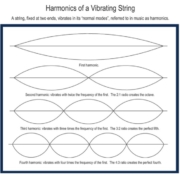

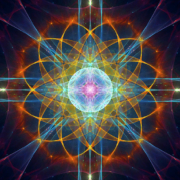 by Leon Van Kraayenburg
by Leon Van Kraayenburg 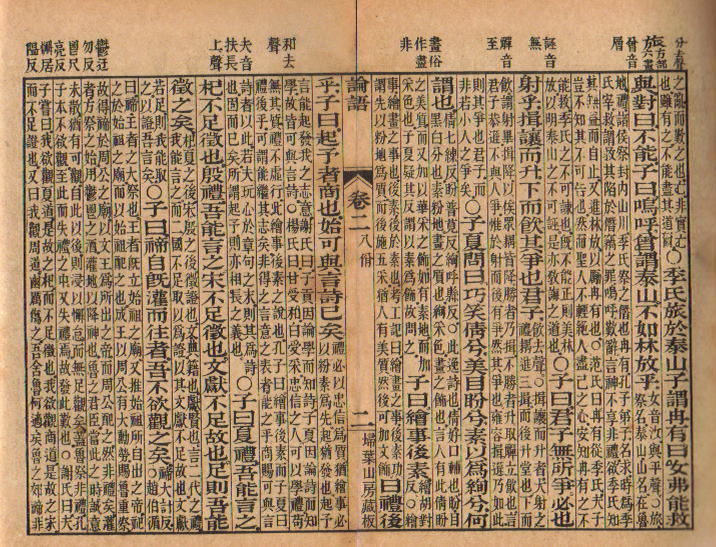
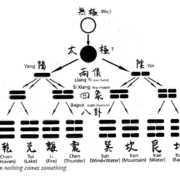
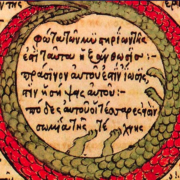

Leave a Reply
Want to join the discussion?Feel free to contribute!